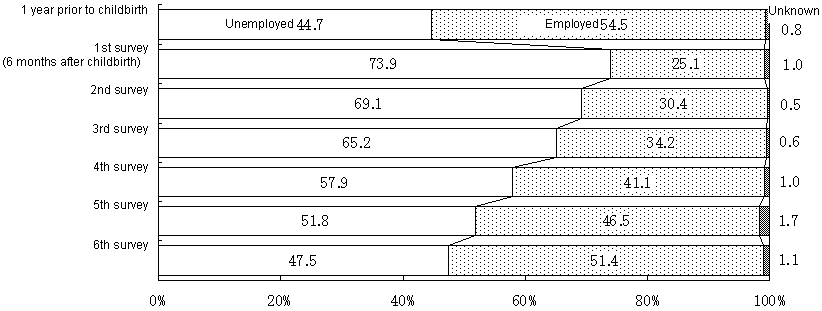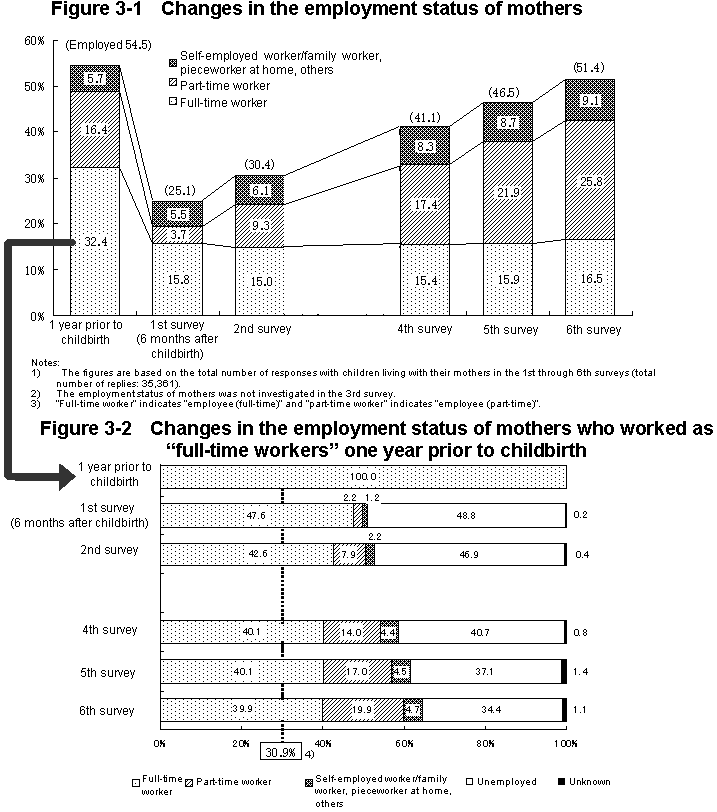(3) Employment Status of Mothers
1) Employed or unemployed
The proportion of employed mothers exceeded 50%.
The proportion of “employed” mothers was 54.5% one year prior to childbirth, and decreased to 25.1% in the 1st survey (6 months after childbirth). It increased year by year and reached 51.4% in the 6th survey. The proportion is returning to the same level of “employed” mothers as one year prior to childbirth (Figure 2).
Referring to the employment status of mothers in relation to the existence of younger sibling(s), the rate of “employed” mothers with children without younger sibling is 59.4%.
In addition, with regard to the age of the youngest sibling among children with younger sibling(s), the higher the age is, the higher the proportion of “employed” mothers becomes (Table 2).
Figure 2 Changes in the proportion of employed and unemployed mothers

|
Table 2 Employment status of mothers in relation to the existence of younger sibling(s) and sibling composition
| ||||||||||||||||||||||||||||||||||||||||||||||||||||||||||||||||||||||||||||||||||||||||||||||||||||||||||||||||||||||||||||||||||||||||||||||||||||||||||||||||||||||
2) Changes in the employment status of mothers
The number of mothers who work as “part-time workers” is on the increase.
With regard to changes in the employment status of mothers, the proportion of “part-time workers” increased year by year from the 1st survey (6 months after childbirth) (3.7%) through the 6th survey (25.8%). Meanwhile, the proportion of “full-time workers” did not change significantly after the 1st survey (6 months after childbirth) and was 16.5% in the 6th survey (Figure 3-1).
About 30% of mothers continue to work as “full-time workers” among mothers who worked as “full-time workers” one year prior to childbirth.
With regard to changes in the employment status of mothers who worked as “full-time workers” one year prior to childbirth, the proportion of “full-time workers” decreased to 47.6% in the 1st survey (6 months after childbirth) and was 39.9% in the 6th survey.
Among mothers who worked as “full-time workers” one year prior to childbirth, 30.9 % of mothers continue to work as “full-time workers” until the 6th survey.
The proportion of mothers who worked as “full-time workers” one year prior to childbirth became “unemployed” in the 1st survey (6 months after childbirth) was 48.8%. However, “unemployed” has been on the decrease year by year and was 34.4% in the 6th survey (Figure 3-2).

| ||||||||||